#leslie o'sullivan
Explore tagged Tumblr posts
Text
Book Review: 'A Kingdom of Souls and Shadows' by Leslie O'Sullivan
Ella O’Dwyer has always been a little timid. New places, new people, new situations, large crowds, high places, anything that isn’t part of her tightly controlled little corner of academia scares her. But now her Grandmother has passed away and secrets are coming to light. Her grandmother leaves her a ring with the inscription “find me” and a plane ticket to Ireland. After a great deal of…

View On WordPress
#Fantasy Novels#Fae Destiny#fairies#book recommendations#book reviews#fantasy series#A Kingdom of Souls and Shadows#Leslie O'Sullivan
0 notes
Text
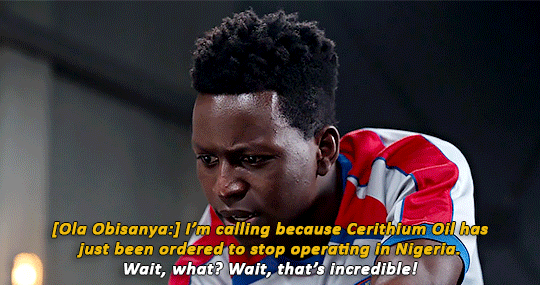









Ted Lasso: Man City
#sam obisanya#afc richmond#roy kent#phoebe kent#phoebe o'sullivan#leann bowen#(it's really funny that they just stole the name of one of their writers)#leslie higgins#jamie tartt#coach beard#the diamond dogs#nate shelley#roy x jamie#royjamie#*
547 notes
·
View notes
Text
*possibly these are not all actually underrated but I barely see discussion about them So. In my humble opinion, etc.
#i voted keeley and higgins but i legit love all of these#ted lasso#ted lasso polls#trent crimm#rebecca welton#jamie tartt#keeley jones#coach beard#isaac mcadoo#colin hughes#phoebe o'sullivan#leslie higgins#my polls#polls
190 notes
·
View notes
Text
Archive Deep Dive continues with a selection from Living Proof. This was one of the first fics I read when I went out looking for Jamie and Phoebe friendship/mischief.
They both have shitty fathers, which is a terrible club to be in but at least they aren’t alone?
#jamie tartt#roy kent#phoebe kent#phoebe o'sullivan#ted lasso#leslie higgins#found family#ao3 archive deep dive
4 notes
·
View notes
Text
five comfort characters & five tags! tysmm for tagging me @loumands <3
Pat from Enid Blyton's The O'Sullivan Twins
Malcolm Bright from Prodigal Son (he is a comfort character im not accepting any other opinions)
Aza Holmes from Turtles All The Way Down by John Green
Leslie Knope from Parks and Rec!
this guy

@bettyrightnow @littleoblivions @singlethread @barbielifeinthematrix @withyouagain <333
10 notes
·
View notes
Text
Richmond till we fucking die
https://ift.tt/EalOtHi by dovahgirl16 Rachel had an impossible dream but she just so happens to know a certain woman who wants to watch Richmond burn to the ground. So why not help her out? Richmond till we fucking die! That's what her dad always said Words: 288, Chapters: 1/?, Language: English Fandoms: Ted Lasso (TV) Rating: Mature Warnings: No Archive Warnings Apply Categories: F/M, M/M Characters: AFC Richmond Players (Ted Lasso), Roy Kent, Dr. O'Sullivan | Roy Kent's Sister, Phoebe (Ted Lasso), Jamie Tartt, James Tartt Sr., Georgie | Jamie Tartt's Mother, Ted Lasso, Coach Beard (Ted Lasso), Original Characters, Nathan Shelley, Trent Crimm, Rebecca Welton, Leslie Higgins Relationships: Roy Kent/Jamie Tartt, Keeley Jones/Roy Kent, Roy Kent & Jamie Tartt, Roy Kent & Dr. O'Sullivan | Roy Kent's Sister, Roy Kent & Yoga Mums, Roy Kent & Ted Lasso, Roy Kent & Phoebe, Keeley Jones & Roy Kent, Jamie Tartt/Original Character(s), Jamie Tartt & Original Female Character(s), Colin Hughes/Jamie Tartt, James Tartt Sr. & Jamie Tartt, AFC Richmond Players & Ted Lasso & Rebecca Welton, Georgie | Jamie Tartt's Mother & Jamie Tartt, Georgie | Jamie Tartt's Mother/Simon, Ted Lasso & Rebecca Welton, Ted Lasso & Jamie Tartt Additional Tags: Implied/Referenced Child Abuse, Implied Sexual Content, Explicit Sexual Content, Hate Sex, Roy Kent Swears, Bisexual Roy Kent, Supportive Roy Kent, Roy Kent Needs a Hug, Top Roy Kent, Protective Roy Kent, Jamie Tartt Needs a Hug, Bisexual Jamie Tartt, Hurt Jamie Tartt, Jamie Tartt Gets a Hug, Jamie Tartt Has a Praise Kink, Ted Lasso Acting as Jamie Tartt's Parental Figure, Bottom Jamie Tartt, Jamie Tartt is Good With Kids, Supportive Keeley Jones, Keeley Jones & Rebecca Welton Friendship, Minor Ted Lasso/Rebecca Welton, Roy Kent & Rebecca Welton Friendship, Protective Rebecca Welton, Adopted Sibling Relationship, Sibling Bonding, Angst with a Happy Ending source https://archiveofourown.org/works/62400898 January 22, 2025 at 04:03AM
0 notes
Text

Leslie O'Sullivan's Kingdom of Souls and Shadows begins with Ella, a heartbroken Celtic professor, navigating her Irish grandmother's will. The will gifts Ella a new name, birth certificate, and a ticket to Ireland, raising many questions. There, Ella meets Sion, a fox shifter and soul guide, who requires her assistance to free souls. An enemy opposes Sion's mission. I thoroughly enjoyed this book, appreciating its multifaceted characters, Irish landscapes, and historical allusions. The ending masterfully paved the way for a second installment.
#fantasy romance#fantasy#paranormal romance#adventure#romance#magic#booktok#Leslie O’Sullivan#irish history#irish folklore
1 note
·
View note
Text
[BOOK TOUR] WILD AZURE WAVES (ROCKIN' FAIRY TALES #3) // LESLIE O'SULLIVAN




I'm incredibly thrilled today to present WILD AZURE WAVES, the third book in the captivating swoonworthy magical romantasy ROCKIN' FAIRY TALES series of Shakespeare/Fairytale mashups by LESLIE O'SULLIVAN, hosted by ESCAPIST BOOK TOURS. I've previously talked about the first book, Pink Guitars and Falling Stars, and Wild Azure Waves is every bit as deliciously romantic, every word like a shot of magic into your veins. Such seamless blending of magic and whimsy and romance makes this series quite beloved in my heart, and I so look forward to every book. This third book, additionally, is laced through with an undercurrent of melancholy that makes it at once heart-wrenching as it is heart-mending. To check out other stops on the tour: https://escapistbookcompany.com/2023/01/30/the-heros-journey-wild-azure-waves-by-leslie-osullivan/
///
Book Blurb:
In book three of the Rockin’ Fairy Tales series of Fairy Tale/Shakespeare mashups, The Little Mermaid meets The Tempest in a fantasy romance where fated mates, second chances, and a supernatural love triangle determine the destiny of all.
Rai Cloud, a once promising singer, faces the loss of his record company and his career until one fateful night a mystery woman saves him from a stormy sea and sings him back to life. The voice of his elusive rescuer must be the missing piece to reignite his musical gifts. If only he could find her!
Before Tani Emerson’s spirit can cross over to the afterlife, the Sea Witch, Sulaa Kylock, intercedes to offer Tani a bargain to earn a way back to the living and reunite with her first true love, Rai Cloud.
Tani must now succeed in challenges set forth by the Sea Witch. In spirit form, she’s charged with convincing Rai she’s not merely an illusion and they will be granted a second chance at love.
Harder still is the need to sabotage the steamy romance brewing between Rai and Azure Tempesta, a sweet and sexy singer from the popular musical act, The Mermaids, who inspires Rai to make the music he thought only his mystery savior could awaken.
See Also:
(This is our attempt at a bit of fun. We ask our authors to come up with a few short, clever, possibly pop culture laden, descriptions of their books just to give a little taste of what’s to come for readers.)
Mermaids Are Real • Splash and Sing • Tattoos Never Lie
///
Book Links:
Amazon: https://www.amazon.com/Azure-Waves-Rockin-Fairy-Tales-ebook/dp/B0BS74YYFH/
///
My review:
4/5 stars
At the heart of this book is a tale of heart's fate and destiny's message, of redemptive love and soul-twines and music and passion, greed and parental control and what it means to be alive and to belong. All our characters here are dealing with grief in one way or another -- Rai Cloud, our island rock musician, sweet and sensitive, grappling in the aftermath of losing his whole family and first love to a tragic fire, pining after lost and imagined and newfound loves, while facing a decision as to what to do with Cloudpath Music, the record label lovingly started by his parents, to honor their legacies and wishes; Tani, half-alive and longing to return to form to be with her first love Rai, so much so that she strikes a deal with a manipulative sea witch; Azure Tempesta, mermaid and daughter of said sea witch and part of the sister musical ensemble The Mermaids, the name so apt in more ways than one, bound by her mother's expectations to a life confined underwater when she wants to roam both land and sea -- and manipulations and magical battles ensue.
Melancholy and magic are intricate twins in this tales, woven delicately and with gorgeous evocative prose as always, set in a beguiling island landscape of moon deities and sea songs and fate. Sweet, sexy, and stirring all at once. Oh, and as you can see in the artwork above, we have a cute feisty little fox Kitae, Rai's companion, who is so fun and adorable!
As a reimagining of The Little Mermaid, I read it as Azure, being the titular mermaid of course, and Tani both representing different aspects of the fairytale. Azure, the mermaid who falls for and rescues the washed-up Rai (singer, dreamer, wanderer, lover) on the shore; giving up her singing voice; longing to belong to both land and sea. Tani, half-alive and unseen, desperately longing for human form, to pursue her prince. Both of them are The Little Mermaid, and you can't help but feel for both of them and the love that drives them, the quest for humanity.
The only things I would've appreciated being added to the tale is more exploration of Tani and Rai's relationship before her death, to cement the desperation that drives Tani to the deal with Sulaa the sea witch to get back to Rai, and more of Azure and her sisters, whom I feel have untapped potential for more exploration of their characters and struggles and their bond.
///
Book Information:
Wild Azure Waves by Leslie O’SullivanSeries: Rockin’ Fairy Tales #3 Genre: Romantasy Intended Age Group: Adult Pages: 275Published: February 9, 2023 Publisher: City Owl Press, Mystic Owl imprint
///
Content/Trigger Warnings:
Shown on Page (things clearly told to the reader):
Supernatural captivity
Fairy tale violence
///
Author Bio & Information:

Leslie O’Sullivan is the author of Rockin' Fairy Tales, an adult romance series of Shakespeare/fairy tale mash ups set against the backdrop of a fictional Hollywood music scene. Coming in September 2022 is her Behind the Scenes contemporary romance series that peeks into the off-camera secrets of a wildly popular television drama. She’s a UCLA Bruin with a BA and MFA from their Department of Theater where she also taught for years on the design faculty. Her tenure in the world of television was as the assistant art director on “It’s Garry Shandling’s Show.” Leslie loves to indulge her fangirl side at cons.
Linktre: https://linktr.ee/LeslieOSullivanWrites
Website: https://www.leslieosullivanwrites.com
Newsletter Sign Up: https://www.leslieosullivanwrites.com/about-5
FB Author Page: https://www.facebook.com/leslieosullivanwrites/
Instagram: https://www.instagram.com/leslieosullivanwrites/
Twitter: https://twitter.com/LeslieSulliRose
Tik Tok: https://www.tiktok.com/@leslieosullivanwrites
FB Reader Group: https://www.facebook.com/groups/acompanyofreaders
#wild azure waves#leslie o'sullivan#escapist book tours#book tour#romance books#fantasy books#fairytale#the little mermaid#shakespeare#the tempest#romantic fantasy
1 note
·
View note
Text









Cha Cha Real Smooth (2022)
Director - Cooper Raiff, Cinematography - Cristina Dunlap
"I feel like there are things that you just, like, don't say to me. And I can't tell whether you're, like, holding back a desire to be close or a desire to be distant."
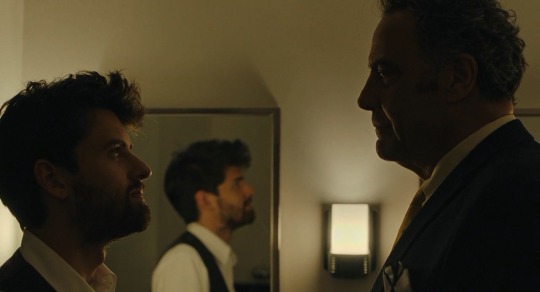
#scenesandscreens#cha cha real smooth#cooper raiff#Cristina Dunlap#dakota johnson#evan assante#vanessa burghardt#leslie mann#brad garrett#raúl castillo#colton osorio#Amara Pedroso Saquel#odeya rush#Brooklyn Sloane Ramirez#kelly o'sullivan
52 notes
·
View notes
Photo







Carry On Teacher (1959) Gerald Thomas
November 27th 2021
#carry on teacher#1959#gerald thomas#ted ray#joan sims#kenneth connor#leslie phillips#rosalind knight#charles hawtrey#kenneth williams#hattie jacques#richard o'sullivan#carol white
8 notes
·
View notes
Photo



Nov 2 1917 OTD Photographer Frank Hurley takes this photo, AWM E01223, of Members of the 1st Australian Light Trench Mortar Battery, 1st Australian Division listening to one of their comrades tell a story around a lamp in a dugout billet at Ypres. Hurley titles photo "How I did it"
IWM E(AUS) 1223 - List the date as Nov 2 1917 AWM E01223 - Lists the date as Oct 28 1917
Daily Mail says it was colourized by Dr Benjamin Thomas for the Juan Mahony book 'The Digger's View. WWI in Colour'
Left to right, back, standing:
1118 Private (Pte) Douglas Kyle MM (partially obscured by Gowrie) Pte Stanley Gowrie Corporal (Cpl) Leslie M. Williams MM (with moustache) Cpl Fox; Lance Corporal Reginald J. Perry Pte Sid Wormald Cpl Harry Brown (with moustache)
Sitting:
Pte S. O'Sullivan (partially obscured by Gowrie) Pte William W. Eastwell (or P. Clifford) Pte J. Jackson Pte R. Bennett Cpl S. Turner MM (all facing camera)
Foreground
2353 Pte Sid Hoptroff Pte W. McDougall Pte William Day
31 notes
·
View notes
Text
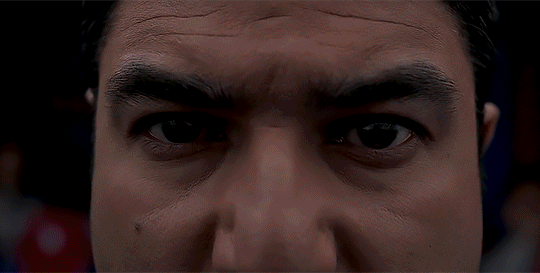
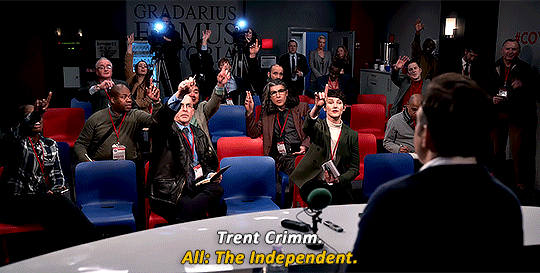




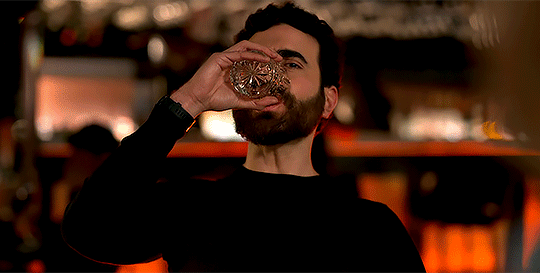



Ted Lasso: Goodbye Earl
#why rewatch in chronological order when you can rewatch in cross sections and watch everyone get more and more unhinged#ted lasso#tedlassoedit#ted lasso by episode#nate shelley#trent crimm#dani rojas#keeley jones#phoebe kent#phoebe o'sullivan#roy kent#coach beard#sharon fieldstone#leslie higgins#jamie tartt#roy x jamie#*
390 notes
·
View notes
Text
Making Her (In)Visible: Cultural Representations of Lesbianism and the Lesbian Body in the 1990's, by Ann M. Ciasullo:
["THE INVISIBLE BUTCH, OR THE UNREPRESENTABLE BODY
I go back, now, to the question that's been a silent but present one throughout most of this article. On the cultural landscape of lesbianism, in the realm of representation, where is the butch? Given the above evidence, it's clear she remains on the margins, rarely seen. Why? Perhaps most obviously because like the butch, unlike the femme, is not consumable; her relative invisibility on the cultural landscape has to do with her perceived (un)attractiveness. Sue O'Sullivan points out that the butch is "the caricature lesbian whipping girl, the one who serves as the repository of mainstream hatred and fear of feminism's 'excesses'.... She is 'mannish' but not at all stylish and at the same time she is definitely a woman. Therefore she has to be ugly— in other words butch.” Or, as Sherrie Inness, nicely encapsulating this point, maintains: "Butches fail to fulfill heterosexual ideas about what is attractive and sexually appealing in women." In other words, the butch, a woman marked more by conventional masculine characteristics than feminine ones, is considered "ugly." And given the configurations of our mainstream cultural landscape, there is little room for those deemed unattractive. In fact, such supposed unattractiveness is an affront to an image-based culture; such as O'Sullivan contends, "the so-called loony, ugly (read not stereotypically feminine) lesbian, increasingly designated as an arbiter of political correctness, remains a figure for derision and hatred.”
But perhaps such "derision and hatred" towards the butch, and her invisibility on the mainstream cultural landscape, is not so simply explained. Another characteristic attributed to the butch that conceivably marks her as unrepresentable is her socioeconomic status. In Odd Girls and Twilight Lovers: A History of Lesbian Life in Twentieth-Century America, Lillian Faderman points out that from the 1920s through the 1960s, the butch-femme pair was usually associated with the working class. Indeed, one need only read Leslie Feinberg's Stone Butch Blues to get an idea of the type of blue-collar jobs the "stone butches" of the 1950s and 1960s held, working primarily on docks and in factories. I would assert that this connection between the butch and her working-class status further contributes to her mainstream undesirability. Look for a moment at the following description of butch-femme relations, as described in a 1993 article in New York magazine:
"It was very different when I came out in Texas," says Jean Sidebottom, the editor and publisher of Sappho's Isle, the tri-state lesbian newspaper. "That bulldyke world was very much the scene I first came out into. The first lesbian bar I ever walked into, in Houston, was owned by a woman called Papa Bear. She was mildly obese, with short-cropped, masculine, stone-butch hair. She smoked cigarettes and wore T-shirts and blue-jeans— she had a key chain on her belt loop and a knife in her boot. Her girlfriend was a stripper. There was a certain sleaziness associated with it that I somehow could never accept. It gave you a feeling of being less than a real person." (Emphasis mine)
The lesbian Sidebottom describes is a butch coded so with her "short-cropped, masculine, stone-butch hair" and her clothes— jeans, boots, T-shirt. There are no markers of "normality" on Papa Bear; she is not only masculine, she is also masculine and undesirable ("mildly obese"). On James Dean, T-shirts, blue jeans, and the accessories might be sexy. On Papa Bear, these attributes contribute to a caricature of the bull dyke and her hypermasculinity, a caricature that seems to be presented as simultaneously humorous and loathsome. Couple this with the fact that the butch's girlfriend is a stripper, and the entire image— and, by extension, the entire body of the butch— is deemed sleazy. Finally, the last line of the quote— "it gave you a feeling of being less than a real person"— leaves me wondering: what is "it"? What specifically leaves Sidebottom feeling so unlike a "real person"? One reading, of course, might be that she felt uncomfortable trying to fit into butch-femme codes of the 1950s and 1960s. However, given the description that precedes this statement I want to point out another reading: the connection between "being less than a real person" and being a butch (or, more specifically here, a bull dyke.) For even if it was the whole scene that made Sidebottom uncomfortable, in this passage it is Papa Bear who represents the source of not only discomfort, but also "sleaziness." The butch here is presented as working class, masculine, and above all, distasteful. Given these characteristics, this lesbian, clearly, is not palatable in any way. And the ways in which class marks the butch— considerably different from the ways class marks the upwardly mobile femmes or feminine lesbians discussed earlier— only contributes to her unrepresentability."]
#butch#lesbian literature#gender stuff#wasteland radio#i would argue the name sidebottom is in and of itself kind of a bummer
219 notes
·
View notes
Text

Lila Lee (born Augusta Wilhelmena Fredericka Appel; July 25, 1905 – November 13, 1973) was a prominent screen actress, primarily a leading lady, of the silent film and early sound film eras.
The daughter of Augusta Fredericka Appel (1875–1940) and Carl Appel (1873–1935), Lee was born Augusta Wilhelmena Fredericka Appel on July 25, 1905 in Union Hill, New Jersey (now part of Union City), into a middle-class family of German immigrants who relocated to New York City. She had an older sister, Pauline ("Peggy"), who had been born in Hamburg, Germany in 1900.
Searching for a hobby for their gregarious young daughter, the Appels enrolled Lila in Gus Edwards' kiddie review shows where she was given the nickname of "Cuddles"; a name that she would be known by for the rest of her acting career. Her stagework became so popular with the public that her parents had her educated with private tutors. Edwards would become Lee's long-term manager.
Lillian Edwards, wife of Gus Edwards, was Lee's guardian. When Lee was 15 years old, she went to court seeking an injunction to prevent Mrs. Edwards "from collecting any money for Lila's services." Mrs. Edwards countered that she had spent 10 years helping to shape Lee's career and had invested money in her.
Lee performed in vaudeville for eight years.
In 1918, she was chosen for a film contract by Hollywood film mogul Jesse Lasky for Famous Players-Lasky Corporation, which later became Paramount Pictures. Her first feature The Cruise of the Make-Believes garnered the seventeen-year-old starlet much public acclaim and Lasky quickly sent Lee on an arduous publicity campaign. Critics lauded Lila for her wholesome persona and sympathetic character parts. Lee quickly rose to the ranks of leading lady and often starred opposite such matinee heavies as Conrad Nagel, Gloria Swanson, Wallace Reid, Roscoe 'Fatty' Arbuckle, and Rudolph Valentino. Lee bore more than a slight resemblance to Ann Little, a former Paramount star and frequent Reid co-star who was leaving the film business and at this stage in her career an even stronger resemblance to Marguerite Clark.
In 1922 Lee was cast as Carmen in the enormously popular film Blood and Sand, opposite matinee idol Rudolph Valentino and silent screen vamp Nita Naldi; Lee subsequently won the first WAMPAS Baby Stars award that year. Lee continued to be a highly popular leading lady throughout the 1920s and made scores of critically praised and widely watched films.
As the Roaring Twenties drew to a close, Lee's popularity began to wane and Lee positioned herself for the transition to talkies. She is one of the few leading ladies of the silent screen whose popularity did not nosedive with the coming of sound. She went back to working with the major studios and appeared, most notably, in The Unholy Three, in 1930, opposite Lon Chaney Sr. in his only talkie. However, a series of bad career choices and bouts of recurring tuberculosis and alcoholism hindered further projects and Lee was relegated to taking parts in mostly grade B-movies.
Lee was married and divorced three times. Her first husband was actor James Kirkwood, Sr., whom she married on July 26, 1923. They had met on the set of Ebb Tide in 1922. Kirkwood filed for divorce in May 1930 on grounds of her desertion; the divorce was finalized in August 1931. Lee and Kirkwood had a son in 1924, James Kirkwood, Jr., whose custody was granted to his father; he became a highly regarded playwright and screenwriter whose works include A Chorus Line and P.S. Your Cat Is Dead. Kirkwood Jr. was primarily raised by Lee's family in Elyria, Ohio.
In her autobiography, Lee revealed she lost her virginity to Kirkwood before they were married and she fell pregnant as a result. Kirkwood ultimately arranged an abortion for her, and their relationship continued after this only because Kirkwood threatened to tell Lee's mother of their premarital relations.
In June 1928, Lee began an affair with John Farrow while Kirkwood was in London.[8] Lee wrote Kirkwood stating she wanted a divorce, and in late September of that year, the two formally separated. Lee decided not to fight for custody of their son because Kirkwood threatened to kill Farrow, Lee, their son, and himself. After their divorce, Lee traveled to Arizona and stayed in a sanitarium. Lee also became engaged to John Farrow, but they separated in 1933 after Lee discovered he was being unfaithful to her. He would go on to marry Maureen O'Sullivan in 1936.
At the beginning of her career, Lee dated Charlie Chaplin.
Her second husband was broker Jack R. Peine, who she married on December 8, 1934. By July 2, 1935, the two had divorced. Lee claimed Peine was a drunk, a gambler, and a cheater. Shortly into their marriage, with Lila looking for a house for the two, Peine took off to Mexico and didn't return for a month.
In 1935, Lee began a relationship with car salesman Reid Russell. In 1936, Lee was living in California with her son, novelist Gouverneur Morris, and his wife Ruth. Lee became engaged to Russell and planned to marry him once he obtained a divorce. On September 25, 1936, Russell's dead body was discovered outside on the hammock by Kirkwood Jr. He had been shot in the head with a .32 caliber one or two days prior. The bullet had penetrated Russell's head and passed through the other side, but the bullet and empty shell were never located. The gun found in his hand was one he kept in his bureau drawer at home.
Her third husband was broker John E. Murphy. According to author Sean Egan in the James Kirkwood biography Ponies & Rainbows (2011), Murphy's will left Lee at the financial mercy of his second wife, who consequently became the manipulative character Aunt Claire in P.S. Your Cat Is Dead, written by Lee's son, James Kirkwood, Jr.
Following the discovery of Russell's body, his death was investigated and treated as a suicide, and Mr. and Mrs. Morris both said that he was suicidal and had made suicidal remarks after losing his job. Lee would later confirm he had threatened suicide on multiple occasions and that he talked about it incessantly.
On November 11, the Los Angeles Times reported that a woman had made a telephone threat towards Russell's mom, Victoria, urging her to stop pushing the investigation into her son's death. The case had recently been reopened after Victoria had a conference with the investigators. Ruth told Lila that Reid had left a suicide note, but that she wasn't going to tell anyone about it. Lee went to the District Attorney's office to say that there was no suicide note, however Morris backtracked and said that there was. Lee herself never read the note, but Morris read it to her, and then burned it in an ashtray. Later in life, James Kirkwood Jr. would confide to a friend, William Russo, that there had been three suicide notes - one in Ruth Morris' jewel box, and two within a newel post on the handrail of a set of stairs in the house. The two other notes were found after the case was closed.
Gouverneur Morris, his wife Ruth, and Lila Lee were questioned by authorities about the destruction of the suicide note. Mrs. Morris claimed she found the suicide note in a box on her dresser drawer two or three days after Russell's body was discovered. Because his death had already been declared a suicide, Morris decided to burn it. Gouverneur Morris added that neither he nor his wife heard the report of a gunshot neighbors recalled coming from the Morris home at about 9 P.M. on September 24, and that there had been no argument prior to Russell's death.
On November 17, the Los Angeles Times reported that Russell's body may be exhumed depending on the report of a ballistic expert who was trying to determine if the .32 caliber revolver found in his hand had been fired recently. The following day, it was reported that Russell's body was to be exhumed as it could not be determined if the .32 caliber had been fired recently because the gun was in such rusty condition. During this time, investigators began to doubt the suicide hypothesis, but still were not considering murder, but rather if his death had occurred somewhere else other than outside on the hammock.
That same day, the San Francisco Chronicle reported that Russell's mother Victoria claimed that four days before Russell's body was found, a woman had telephoned repeatedly asking for Russell and demanding to know where he was. Investigators were beginning to consider that Russell's death could have been a "love slaying". However, on November 19, his ex-wife told the Los Angeles Times that she believed Russell had killed himself. An entirely new theory was also introduced that day by The Examiner, who ran a story headed, "Racketeering Ring Linked to Russell Case". The source for the information was Detective Lieutenant Harry Leslie Hansen of the Georgia Street Divison, who was an old friend of Russell. The Los Angeles Times carried the story the next day, claiming that Hansen had reported to the District Attorney's office that Russell had told him that he was going to quit his automobile salesman's job to smuggle arms and ammunition to a foreign country. Russell revealed these plans to Hansen when the two had gone on a weekend party five days before his death. The same paper reported that Russell's exhumed body had led a county autopsy to declare that the results of the first autopsy still stood: the wound on Russell's temple was powder-marked and seared, indicating a self-inflicted wound, and that the wound was too small to have been made by either .45 or .38 caliber weapons and too big to have resulted from the firing of a .22, thus indicating that the .32 found in Russell's hand was indeed the cause of death.
In the 1930s she was diagnosed with tuberculosis and briefly stayed at a sanitarium in Prescott, Arizona in 1933. She then moved to Saranac Lake, New York for treatment at the Will Rogers Memorial Hospital. Lee made several uneventful appearances in stage plays in the 1940s, and starred in early television soap operas in the 1950s.
In 1973 Lee died of a stroke at Saranac Lake. She is buried at Brookdale Cemetery in Elyria, Ohio.
For her contribution as an actress in motion pictures, she was awarded a star on the Hollywood Walk of Fame at 1716 Vine Street. It was dedicated on February 8, 1960.
#lila lee#silent era#silent hollywood#silent movie stars#classic hollywood#golden age of hollywood#classic movie stars#1910s movies#1920s hollywood#1930s hollywood
12 notes
·
View notes
Photo

Popular Psychology titles available now on the Axis 360 app!
Talking to Strangers: What We Should Know About the People We Don’t Know by Malcolm Gladwell
4.04/5
Malcolm Gladwell, host of the podcast Revisionist History and author of the #1 New York Times bestseller Outliers, offers a powerful examination of our interactions with strangers -- and why they often go wrong. How did Fidel Castro fool the CIA for a generation? Why did Neville Chamberlain think he could trust Adolf Hitler? Why are campus sexual assaults on the rise? Do television sitcoms teach us something about the way we relate to each other that isn't true? While tackling these questions, Malcolm Gladwell was not solely writing a book for the page. He was also producing for the ear. In the audiobook version of Talking to Strangers, you'll hear the voices of people he interviewed--scientists, criminologists, military psychologists. Court transcripts are brought to life with re-enactments. You actually hear the contentious arrest of Sandra Bland by the side of the road in Texas. As Gladwell revisits the deceptions of Bernie Madoff, the trial of Amanda Knox, and the suicide of Sylvia Plath, you hear directly from many of the players in these real-life tragedies. There's even a theme song - Janelle Monae's "Hell You Talmbout." Something is very wrong, Gladwell argues, with the tools and strategies we use to make sense of people we don't know. And because we don't know how to talk to strangers, we are inviting conflict and misunderstanding in ways that have a profound effect on our lives and our world.
Maybe You Should Talk to Someone: A Therapist, Her Therapist, and Our Lives Revealed by Lori Gottlieb
4.38/5
One day, Lori Gottlieb is a therapist who helps patients in her Los Angeles practice. The next, a crisis causes her world to come crashing down. Enter Wendell, the quirky but seasoned therapist in whose office she suddenly lands. With his balding head, cardigan, and khakis, he seems to have come straight from Therapist Central Casting. Yet he will turn out to be anything but. As Gottlieb explores the inner chambers of her patients' lives -- a self-absorbed Hollywood producer, a young newlywed diagnosed with a terminal illness, a senior citizen threatening to end her life on her birthday if nothing gets better, and a twenty-something who can't stop hooking up with the wrong guys -- she finds that the questions they are struggling with are the very ones she is now bringing to Wendell.
My Age of Anxiety: Fear, Hope, Dread, and the Search for Peace of Mind by Scott Stossel
3.84/5
A riveting, revelatory, and moving account of the author’s struggles with anxiety, and of the history of efforts by scientists, philosophers, and writers to understand the condition
As recently as thirty-five years ago, anxiety did not exist as a diagnostic category. Today, it is the most common form of officially classified mental illness. Scott Stossel gracefully guides us across the terrain of an affliction that is pervasive yet too often misunderstood.
Drawing on his own long-standing battle with anxiety, Stossel presents an astonishing history, at once intimate and authoritative, of the efforts to understand the condition from medical, cultural, philosophical, and experiential perspectives. He ranges from the earliest medical reports of Galen and Hippocrates, through later observations by Robert Burton and Søren Kierkegaard, to the investigations by great nineteenth-century scientists, such as Charles Darwin, William James, and Sigmund Freud, as they began to explore its sources and causes, to the latest research by neuroscientists and geneticists. Stossel reports on famous individuals who struggled with anxiety, as well as on the afflicted generations of his own family. His portrait of anxiety reveals not only the emotion’s myriad manifestations and the anguish anxiety produces but also the countless psychotherapies, medications, and other (often outlandish) treatments that have been developed to counteract it. Stossel vividly depicts anxiety’s human toll—its crippling impact, its devastating power to paralyze—while at the same time exploring how those who suffer from it find ways to manage and control it. My Age of Anxiety is learned and empathetic, humorous and inspirational, offering the reader great insight into the biological, cultural, and environmental factors that contribute to the affliction.
The Recovering: Intoxication and Its Aftermath by Leslie Jamison
3.99/5
By the New York Times bestselling author of The Empathy Exams, an exploration of addiction, and the stories we tell about it, that reinvents the traditional recovery memoir.
With its deeply personal and seamless blend of memoir, cultural history, literary criticism, and journalistic reportage, The Recovering turns our understanding of the traditional addiction narrative on its head, demonstrating that the story of recovery can be every bit as electrifying as the train wreck itself. Leslie Jamison deftly excavates the stories we tell about addiction--both her own and others'--and examines what we want these stories to do, and what happens when they fail us.
All the while, she offers a fascinating look at the larger history of the recovery movement, and at the literary and artistic geniuses whose lives and works were shaped by alcoholism and substance dependence, including John Berryman, Jean Rhys, Raymond Carver, Billie Holiday, David Foster Wallace, and Denis Johnson, as well as brilliant figures lost to obscurity but newly illuminated here.
For the power of her striking language and the sharpness of her piercing observations, Jamison has been compared to such iconic writers as Joan Didion and Susan Sontag. Yet her utterly singular voice also offers something new. With enormous empathy and wisdom, Jamison has given us nothing less than the story of addiction and recovery in America writ large, a definitive and revelatory account that will resonate for years to come.
Look Me in the Eye: My Life with Asperger's by John Elder Robison
3.92/5
Ever since he was small, John Robison had longed to connect with other people, but by the time he was a teenager, his odd habits—an inclination to blurt out non sequiturs, avoid eye contact, dismantle radios, and dig five-foot holes (and stick his younger brother in them)—had earned him the label “social deviant.” No guidance came from his mother, who conversed with light fixtures, or his father, who spent evenings pickling himself in sherry. It was no wonder he gravitated to machines, which could, at least, be counted on.
After fleeing his parents and dropping out of high school, his savant-like ability to visualize electronic circuits landed him a gig with KISS, for whom he created their legendary fire-breathing guitars. Later, he drifted into a “real” job, as an engineer for a major toy company. But the higher Robison rose in the company, the more he had to pretend to be “normal” and do what he simply couldn’t: communicate. It wasn’t worth the paycheck.
It was not until he was forty that an insightful therapist told him he had the form of autism called Asperger’s syndrome. That understanding transformed the way Robison saw himself—and the world.
Look Me in the Eye is the moving, darkly funny story of growing up with Asperger’s at a time when the diagnosis simply didn’t exist. A born storyteller, Robison takes you inside the head of a boy whom teachers and other adults regarded as “defective,” who could not avail himself of KISS’s endless supply of groupies, and who still has a peculiar aversion to using people’s given names (he calls his wife “Unit Two”). He also provides a fascinating reverse angle on the younger brother he left at the mercy of their nutty parents—the boy who would later change his name to Augusten Burroughs and write the bestselling memoir Running with Scissors.
Ultimately, this is the story of Robison’s journey from his world into ours, and his new life as a husband, father, and successful small business owner—repairing his beloved high-end automobiles. It’s a strange, sly, indelible account—sometimes alien, yet always deeply human.
Is It All in Your Head?: True Stories of Imaginary Illness by Suzanne O'Sullivan
4.05/5 stars
A neurologist's insightful and compassionate look into the misunderstood world of psychosomatic disorders, told through individual case histories
#book recs#book recommendations#reading recommendations#currently reading#psychology#nonfiction#non fiction#nonfiction books#nonfiction reads#booklr#bookish#recommendations#popular titles#ebooks#ereading#axis 360#available now
9 notes
·
View notes
Text
Richmond till we fucking die
https://ift.tt/EalOtHi by dovahgirl16 Rachel had an impossible dream but she just so happens to know a certain woman who wants to watch Richmond burn to the ground. So why not help her out? Richmond till we fucking die! That's what her dad always said Words: 288, Chapters: 1/?, Language: English Fandoms: Ted Lasso (TV) Rating: Mature Warnings: No Archive Warnings Apply Categories: F/M, M/M Characters: AFC Richmond Players (Ted Lasso), Roy Kent, Dr. O'Sullivan | Roy Kent's Sister, Phoebe (Ted Lasso), Jamie Tartt, James Tartt Sr., Georgie | Jamie Tartt's Mother, Ted Lasso, Coach Beard (Ted Lasso), Original Characters, Nathan Shelley, Trent Crimm, Rebecca Welton, Leslie Higgins Relationships: Roy Kent/Jamie Tartt, Keeley Jones/Roy Kent, Roy Kent & Jamie Tartt, Roy Kent & Dr. O'Sullivan | Roy Kent's Sister, Roy Kent & Yoga Mums, Roy Kent & Ted Lasso, Roy Kent & Phoebe, Keeley Jones & Roy Kent, Jamie Tartt/Original Character(s), Jamie Tartt & Original Female Character(s), Colin Hughes/Jamie Tartt, James Tartt Sr. & Jamie Tartt, AFC Richmond Players & Ted Lasso & Rebecca Welton, Georgie | Jamie Tartt's Mother & Jamie Tartt, Georgie | Jamie Tartt's Mother/Simon, Ted Lasso & Rebecca Welton, Ted Lasso & Jamie Tartt Additional Tags: Implied/Referenced Child Abuse, Implied Sexual Content, Explicit Sexual Content, Hate Sex, Roy Kent Swears, Bisexual Roy Kent, Supportive Roy Kent, Roy Kent Needs a Hug, Top Roy Kent, Protective Roy Kent, Jamie Tartt Needs a Hug, Bisexual Jamie Tartt, Hurt Jamie Tartt, Jamie Tartt Gets a Hug, Jamie Tartt Has a Praise Kink, Ted Lasso Acting as Jamie Tartt's Parental Figure, Bottom Jamie Tartt, Jamie Tartt is Good With Kids, Supportive Keeley Jones, Keeley Jones & Rebecca Welton Friendship, Minor Ted Lasso/Rebecca Welton, Roy Kent & Rebecca Welton Friendship, Protective Rebecca Welton, Adopted Sibling Relationship, Sibling Bonding, Angst with a Happy Ending source https://archiveofourown.org/works/62400898 January 22, 2025 at 04:03AM
0 notes